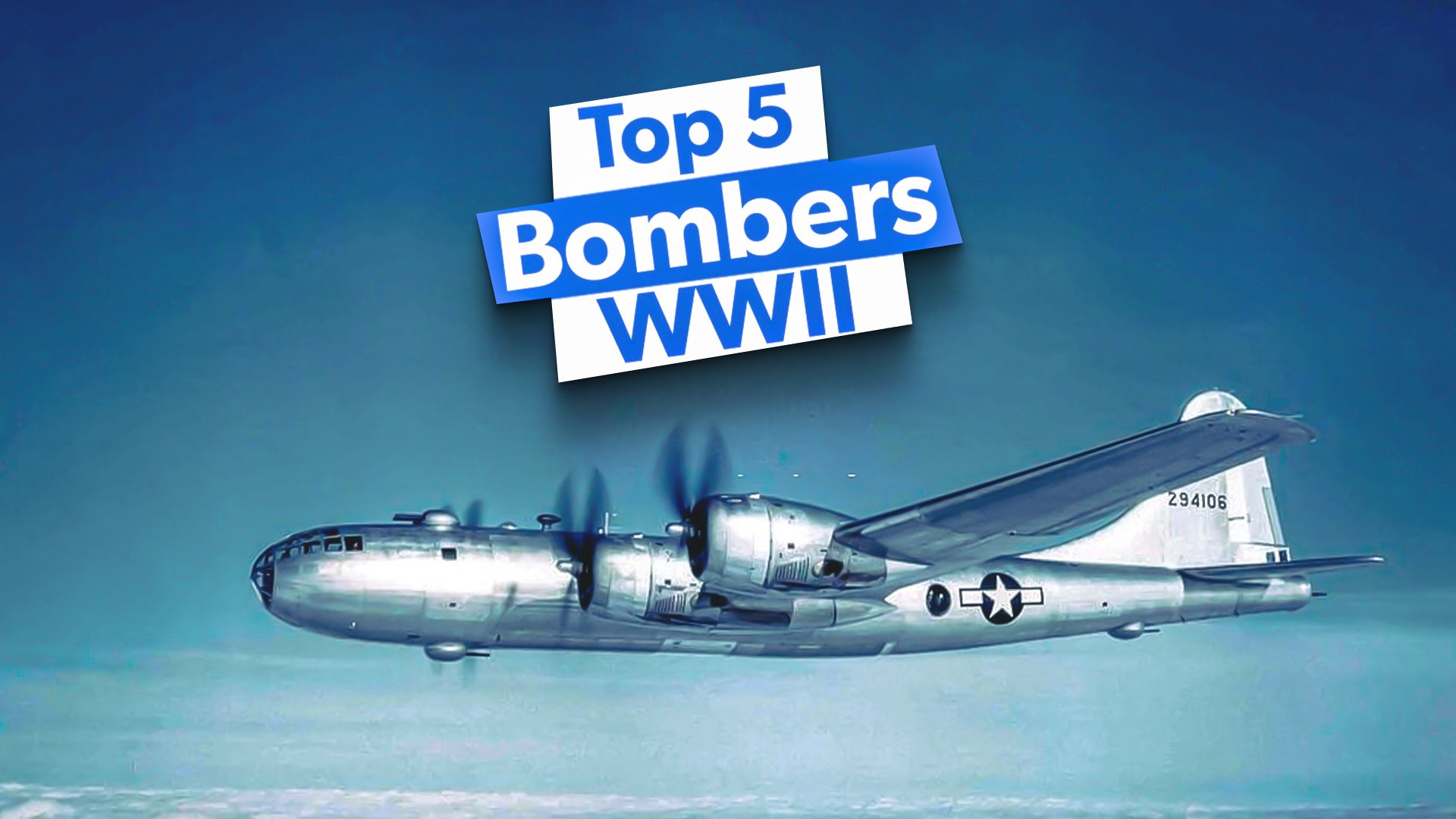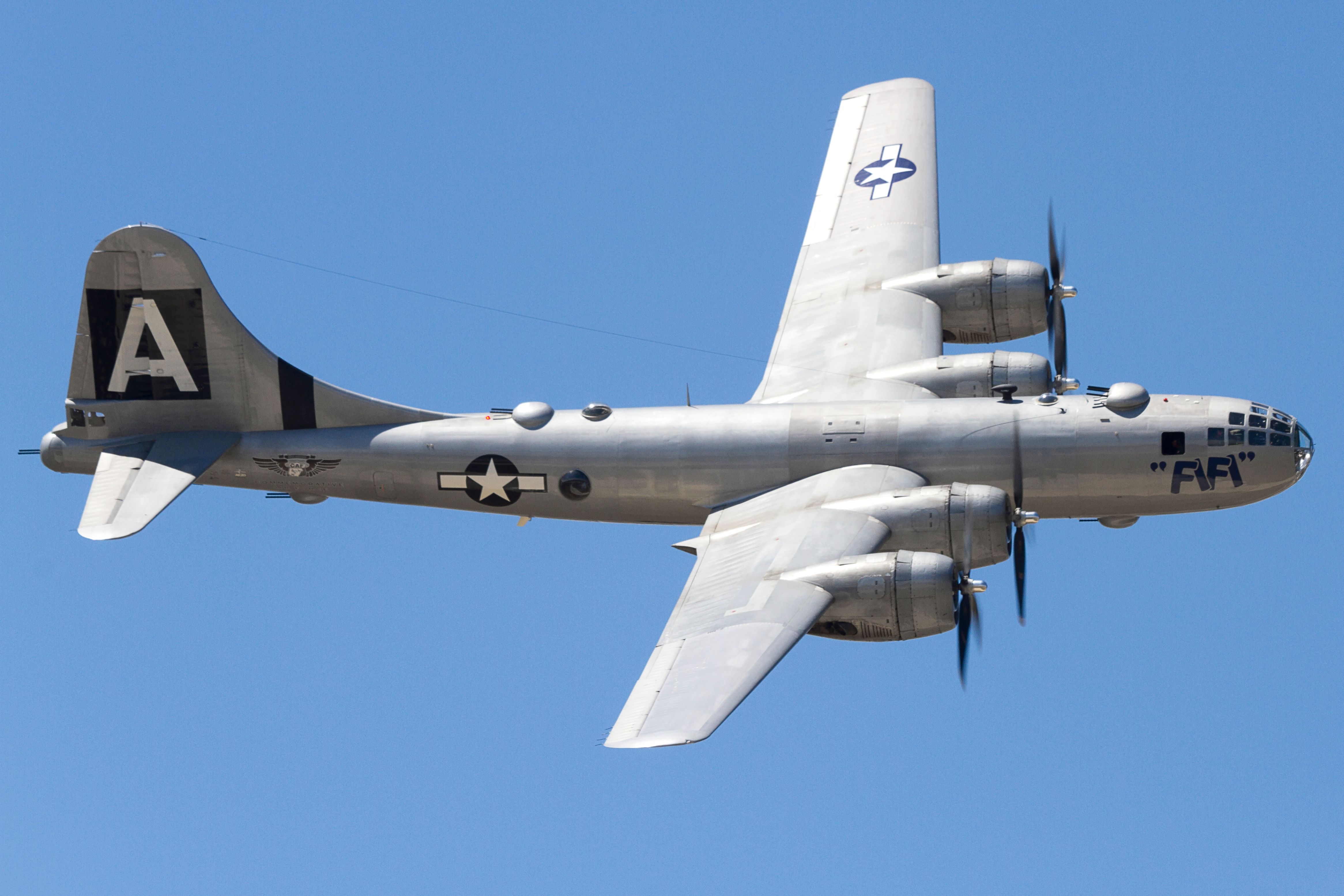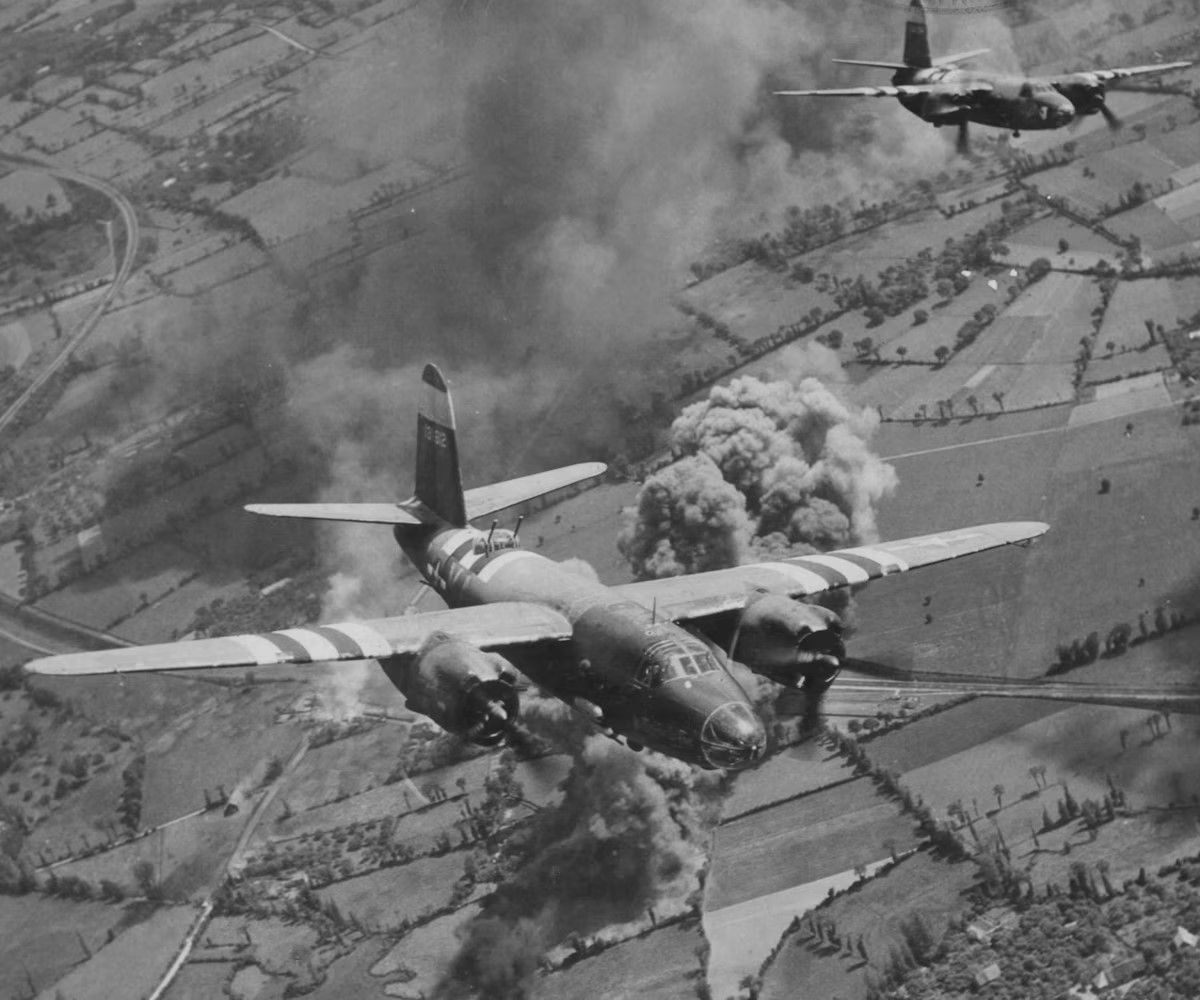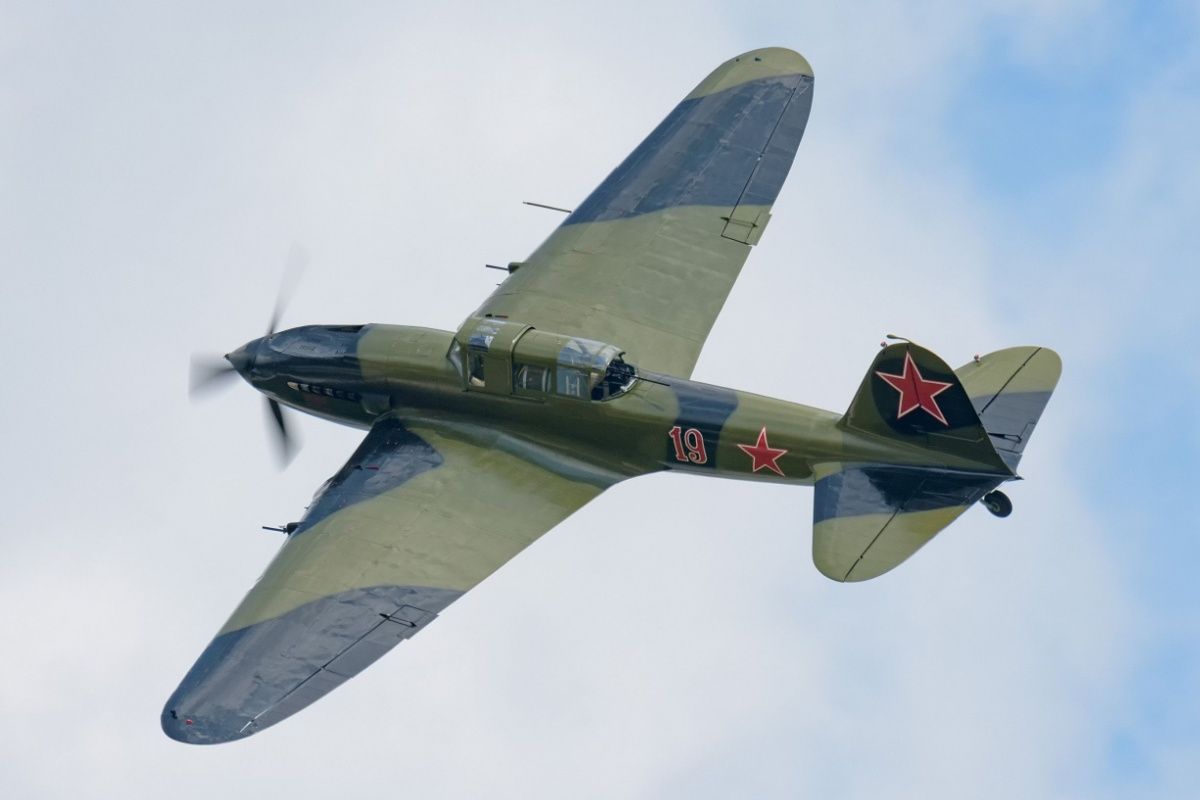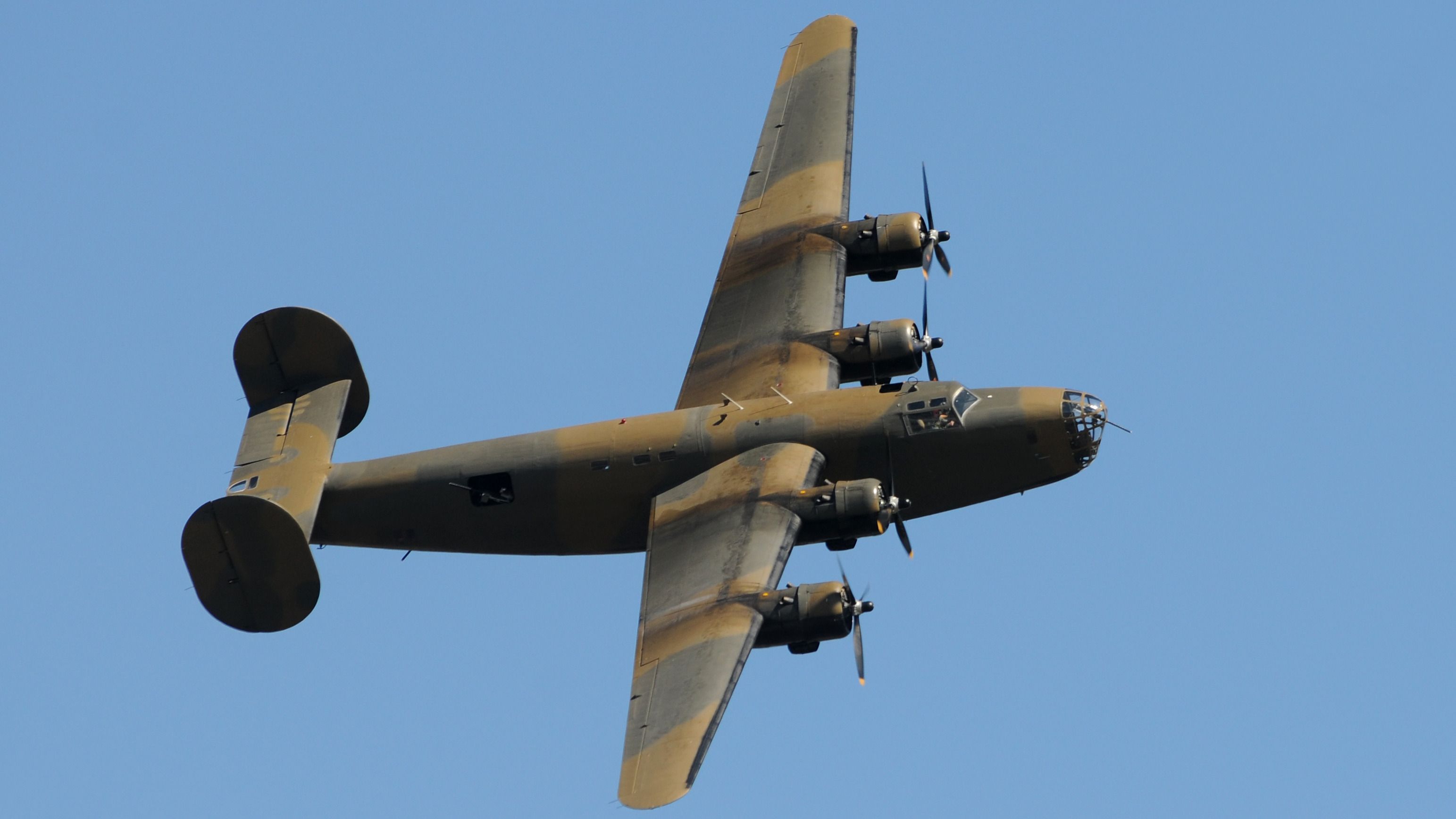Summary
- B-25 Mitchell – Medium bomber used in every World War II combat area.
- B-29 Superfortress – First bomber with pressurized compartments, dropped first atomic bomb.
- IL-2 – Soviet ground-attack bomber produced in large numbers, deemed essential by Stalin.
Medium and heavy bombers held the global stage during World War II, serving in strategic bombing and other missions. Hundreds of thousands of combat aircraft were produced worldwide during the war. This article notes some bombers that were critical during the Second World War.
1
North American B-25 Mitchell
Number built: 9,816
- Powerplant: 2 × Wright R-2600-92 Twin Cyclone14-cylinder two-row air-cooled radial piston engines, 1,700 hp (1,300 kW) each
- Maximum speed: 272 mph (438 km/h, 236 kn) at 13,000 ft (4,000 m)
- Cruise speed: 230 mph (370 km/h, 200 kn)
- Range: 1,350 mi (2,170 km, 1,170 NM)
- Service ceiling: 24,200 ft (7,400 m)
The North American B-25 Mitchell was a medium bomber used in every combat area during World War II. The B-25 performed its first flight in August 1940 and entered military service with the US Army Air Corps (USAAC) in February 1941.
Photo: EAA
In addition to the United States forces, the B-25 was flown by British, Chinese, Russian, Dutch, and Australian forces. The United States Air Force (USAF) states that the aircraft was used extensively in the Pacific Theater for bombing Japanese airfields and beach emplacements.
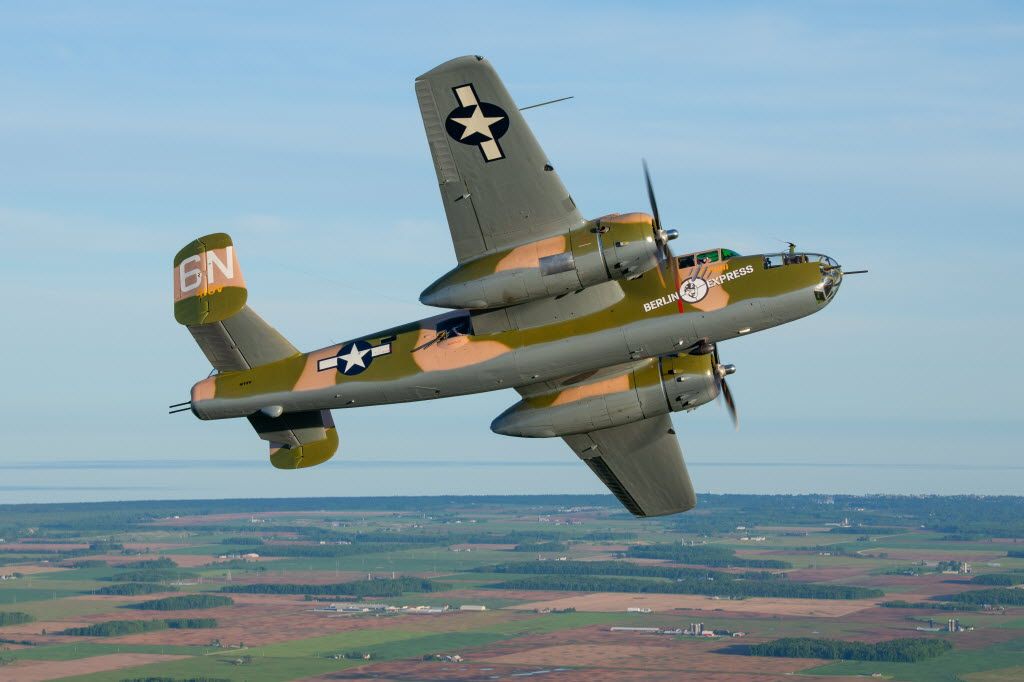
Related
How Many B-25 Bombers Are Still Flying?
Of the 9,000 aircraft produced, less than 40 of the medium bombers made famous by the Doolittle Raid are still airworthy.
By the war’s end, North American Aviation had produced 9,816 examples of the B-25 aircraft, making it one of the most popular airplanes of World War II.
2
Boeing B-29 Superfortress
Number built: 3,970
- Powerplant: 4 × Wright R-3350-23 Duplex-Cyclone 18-cylinder air-cooled turbo supercharged radial piston engines, 2,200 hp (1,600 kW) each
- Maximum speed: 357 mph (575 km/h, 310 kn)
- Cruise speed: 220 mph (350 km/h, 190 kn)
- Range: 3,250 mi (5,230 km, 2,820 NM)
- Ferry range: 5,600 mi (9,000 km, 4,900 NM)
- Service ceiling: 31,850 ft (9,710 m)
The Boeing B-29 Superfortress was the first bomber to feature pressurized compartments for its crew. The aircraft was designed to fight in the European theater; it was extensively used in the Pacific. It was capable of delivering a variety of aerial weapons, including conventional bombs, incendiary bombs, nuclear weapons, and mines.
Photo: BlueBarronPhoto | Shutterstock
As highlighted by the Smithsonian Museum, the B-29 Superfortress dropped the first atomic weapon on Hiroshima, Japan, on August 6, 1945. Three days later, Bockscar dropped a second atomic bomb on Nagasaki, Japan. Boeing built 3,970 examples of the B-29 strategic bomber between 1943 and 1946.
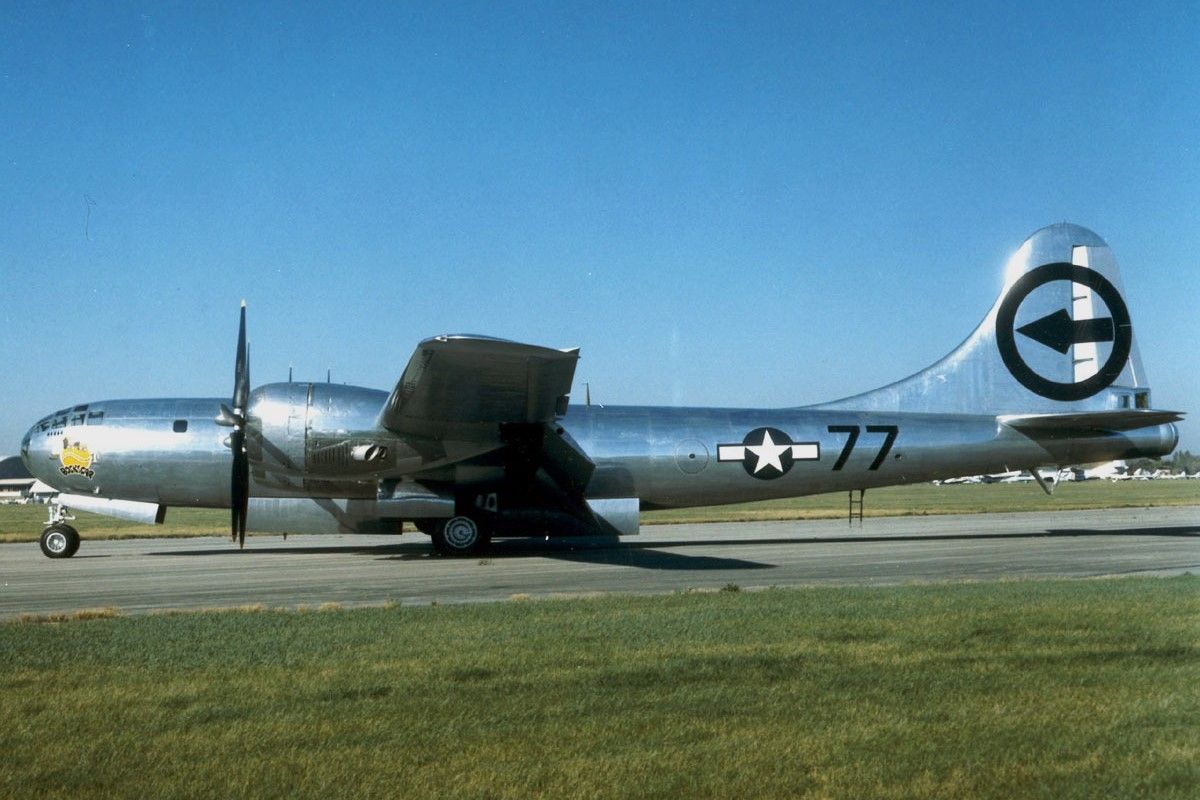
Related
What You Need To Know About The B-29 Superfortress Bomber
A guide and history into the Boeing B-29 Superfortress.
3
Martin B-26 Marauder
Number built: 5,288
- Powerplant: 2 × Pratt & Whitney R-2800-43 Double Wasp 18-cylinder radial piston engines, 2,000–2,200 hp (1,500–1,600 kW) each
- Maximum speed: 287 mph (462 km/h, 249 kn) at 5,000 feet (1,500 m)
- Cruise speed: 216 mph (348 km/h, 188 kn)
- Combat range: 1,150 mi (1,850 km, 1,000 NM) with 3,000 pounds (1,400 kg) bombload and 1,153 US gal (4,365 L) of fuel
- Ferry range: 2,850 mi (4,590 km, 2,480 NM)
- Service ceiling: 21,000 ft (6,400 m)
The Martin B-26 Marauder was another medium bomber that saw extensive use in the Second World War. With its first flight in November 1940, the B-26 was introduced to service with the US forces in 1941. It began bombing missions in the Pacific Theater but was later used in the Mediterranean Theater in Western Europe.
Photo: National Museum of the United States Air Force
The initial production aircraft had a high accident rate, particularly during takeoffs and landings, and the type received the reputation of a “widowmaker.” The manufacturer significantly improved the aerodynamic controls and low-altitude performance to make the aircraft safer. At the end of World War II, the B-26 Marauder had the lowest loss rate of any USAAF aircraft.

Related
What Rare Planes Can You Find At The National Museum Of The US Air Force?
There’s plenty to be in awe of at the world’s largest military museum.
4
Ilyushin II-2
Number built: 36,183
- Powerplant: 1 × Mikulin AM-38F liquid-cooled V12 engine, 1,280 kW (1,720 hp) (takeoff power),1,100 kW (1,500 hp) at 750 m (2,460 ft)
- Propellers: 3-bladed AV-57-158 variable-pitch propeller, 3.60 m (11 ft 10 in) diameter
- Maximum speed: 410 km/h (250 mph, 220 kn) at 1,500 m (4,900 ft)
- Range: 765 km (475 mi, 413 NM) at 275 km/h (171 mph; 148 kn) and 1,000 m (3,300 ft)
- Service ceiling: 6,360 m (20,870 ft)
The Ilyushin II-2 was a Soviet Union ground-attack bomber produced in large numbers during the Second World War. With over 36,000 examples produced, the aircraft played an essential (yes! literally) role on the Eastern Front. The Soviet Union leader Joseph Stalin had commanded the factory workers that the type was as essential to the Red Army as food and air to breathe.
Photo: Arkady Zakharov l Shutterstock
The aircraft was capable of destroying tens of ground tanks and other equipment within minutes, enabling a precise and effective ground attack mission for the forces. While not as accurate as the Republic P-47 Thunderbolt and the Hawker Typhoon, the II-2 could carry heavy armor. With some shortage of fighters, the II-2 was occasionally used as a fighter.
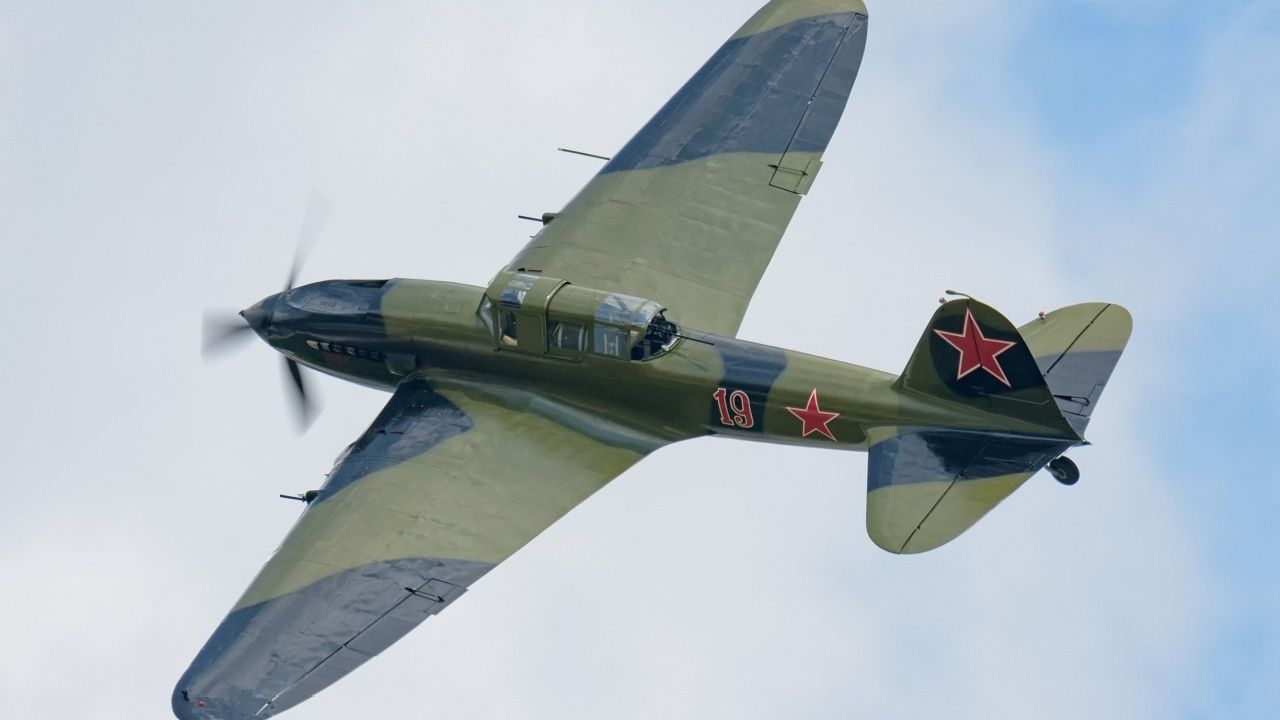
Related
Ilyushin Il-2: 5 Fast Facts About The World’s Most Produced Warplane
The Il-2 was the pride of the Soviet air force in World War Two, similar to how the Spitfire was the pride of the RAF.
5
Consolidated B-24 Liberator
Number built: 18,500
- Powerplant: 4 × Pratt & Whitney R-1830-35 Twin Wasp, R-1830-41 or R-1830-65 14-cylinder two-row air-cooled turbo-supercharged radial piston engines, 1,200 hp (890 kW) each
- Maximum speed: 297 mph (478 km/h, 258 kn) at 25,000 ft (7,600 m)
- Cruise speed: 215 mph (346 km/h, 187 kn)
- Range: 1,540 mi (2,480 km, 1,340 NM) at 237 mph (206 kn; 381 km/h) and 25,000 ft (7,600 m) with normal fuel and maximum internal bomb load
- Ferry range: 3,700 mi (6,000 km, 3,200 NM)
- Service ceiling: 28,000 ft (8,500 m)
The Consolidated B-25 Liberator was a modern-design heavy bomber featuring an efficient wing design. The shoulder-mounted high-aspect-ratio wing enabled a long-range, high cruise speed and the ability to carry a heavy bomb load. With approximately 18,500 examples built between 1940 and 1945, the B-24 Liberator had a greater payload capacity and longer range than the B-17 Flying Fortress.
Photo: Ivan Cholakov | Shutterstock
The longer range of the aircraft made it appropriate for use in Asia and Oceania, particularly in Japan. The B-24 had a service ceiling of just 28,000 ft (8,500 m), making it more visible due to low-altitude operations. The aircraft was named “flying coffin” due to its vulnerability to ground attacks.
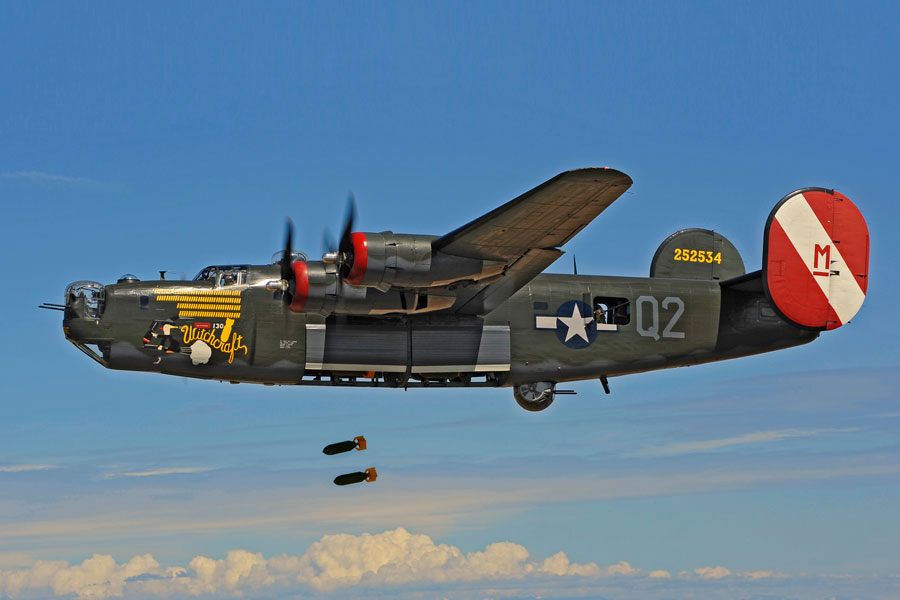
Related
Are There Any B-24 Liberators Still Flying Today?
The aircraft took to the skies after a break of over 20 years.
What are your thoughts on the top bombers of World War II? Share your views in the comments section.

